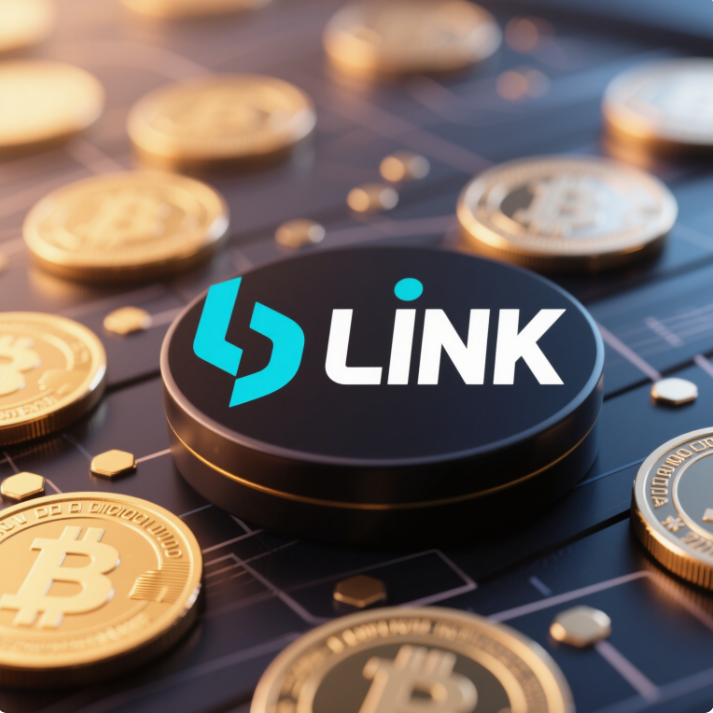Introduction
In the world of cryptocurrencies, countless tokens and projects compete for attention, but one that stands out due to its innovation and utility is LINK. Powered by the Chainlink network, LINK has carved a niche for itself as a leading decentralized oracle solution that plays a critical role in connecting smart contracts with real-world data. This article delves deep into LINK, exploring its unique features, how it works, and why it’s becoming increasingly important in the blockchain and cryptocurrency landscape.
What Is LINK (Chainlink)?
LINK is the native cryptocurrency of the Chainlink network, a decentralized oracle network that enables smart contracts on various blockchains to securely interact with external data sources, APIs, and traditional payment systems. Smart contracts, while powerful, are limited by the data that resides within their blockchain. To bridge this gap, Chainlink uses oracles—trusted data feeds that provide off-chain information to on-chain contracts.
In simple terms, LINK allows blockchain networks to securely access external data, like real-time financial prices, weather information, and even legal agreements. This feature significantly broadens the scope of what decentralized applications (dApps) can do, unlocking use cases far beyond simple token transfers.
The Role of Chainlink in the Blockchain Ecosystem
Chainlink's primary goal is to enhance the functionality of blockchain technology by providing a reliable and secure connection between the decentralized world of blockchain and the real world. Smart contracts are self-executing agreements, and they need external data to execute their terms. Chainlink provides this data securely through decentralized oracles, making the information trustworthy and tamper-resistant.
Without Chainlink, blockchains would struggle to interact with real-world data, limiting the use cases for decentralized finance (DeFi), insurance protocols, and other blockchain-based applications. Chainlink solves this issue by acting as an intermediary, ensuring that smart contracts can interact with external data sources without compromising the security or reliability of the blockchain.
How LINK Works: Decentralized Oracle Network
At its core, Chainlink consists of a decentralized network of nodes that act as oracles. These nodes are operated by independent entities that gather real-world data, process it, and feed it to smart contracts on various blockchains. The LINK token is used as an incentive to encourage nodes to act honestly and provide accurate data. The more accurate and reliable the data, the higher the reward for the node operator in LINK tokens.
One of the key innovations of Chainlink is its use of multiple oracles to source data. Instead of relying on a single data provider, Chainlink uses multiple independent oracles to prevent data manipulation or errors. This decentralized approach ensures that smart contracts receive reliable, accurate, and tamper-proof information.
The Value Proposition of LINK in Crypto and DeFi
LINK has become an integral part of the decentralized finance (DeFi) ecosystem. Many DeFi projects rely on Chainlink's decentralized oracle network to ensure that their smart contracts can interact with off-chain data in a secure and trustless manner. For example, decentralized exchanges (DEXs) and lending platforms rely on Chainlink’s price feeds to offer accurate and up-to-date market data, while stablecoins use Chainlink’s oracles to maintain their peg to fiat currencies.
Moreover, Chainlink’s oracles are not limited to price data. They can support a wide range of use cases, from providing weather data for insurance contracts to facilitating real-world asset tokenization. This versatility makes LINK an essential component for the continued growth and development of DeFi and the broader cryptocurrency ecosystem.

Why LINK Is Essential for the Future of Blockchain
As blockchain technology continues to evolve, the demand for secure, reliable, and decentralized data feeds will only grow. LINK’s role as the primary cryptocurrency that powers the Chainlink network positions it as a key player in this future. The ability to connect smart contracts to real-world data is a fundamental feature for the development of more sophisticated decentralized applications and services.
Furthermore, as more industries look to adopt blockchain technology, oracles like Chainlink will become critical for bridging the gap between traditional data sources and decentralized networks. Whether it’s supply chain management, insurance, or gaming, the potential applications of Chainlink’s technology are vast.
Conclusion
LINK, the native cryptocurrency of the Chainlink network, is more than just another digital asset—it’s a vital component of the decentralized ecosystem. By providing decentralized oracles that securely connect smart contracts to real-world data, Chainlink unlocks new possibilities for blockchain-based applications and decentralized finance. As the crypto space continues to grow, LINK’s importance will only increase, solidifying its role as one of the most important tokens in the market.
For platforms like HIBT, which provide valuable insights and information about cryptocurrency exchanges, understanding the significance of LINK is essential. Whether you’re a trader, developer, or enthusiast, keeping up with innovations like Chainlink and its LINK token is key to staying ahead in the fast-evolving world of digital currencies.
HIBT remains dedicated to bringing you the latest updates and analysis on the most significant developments in the crypto world, ensuring that you’re equipped to make informed decisions in this exciting industry.